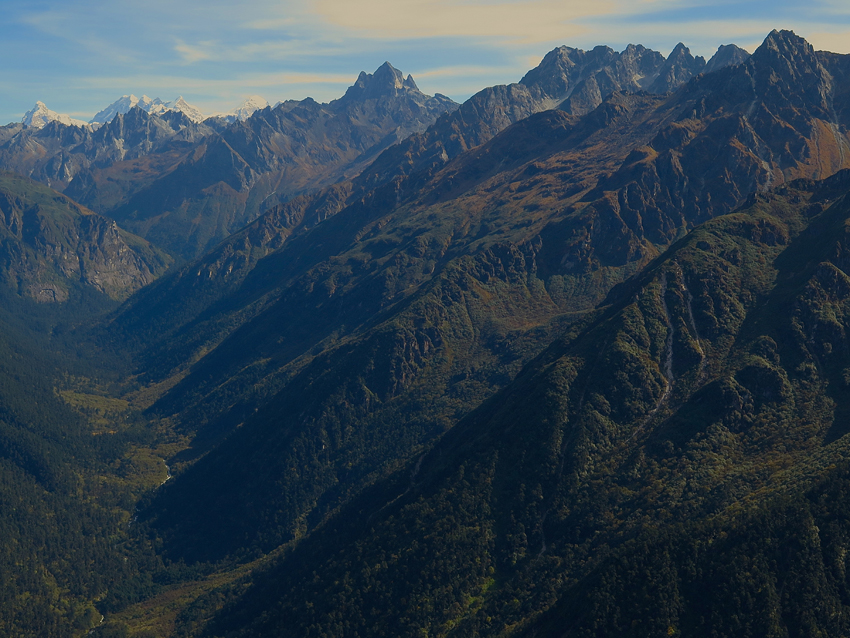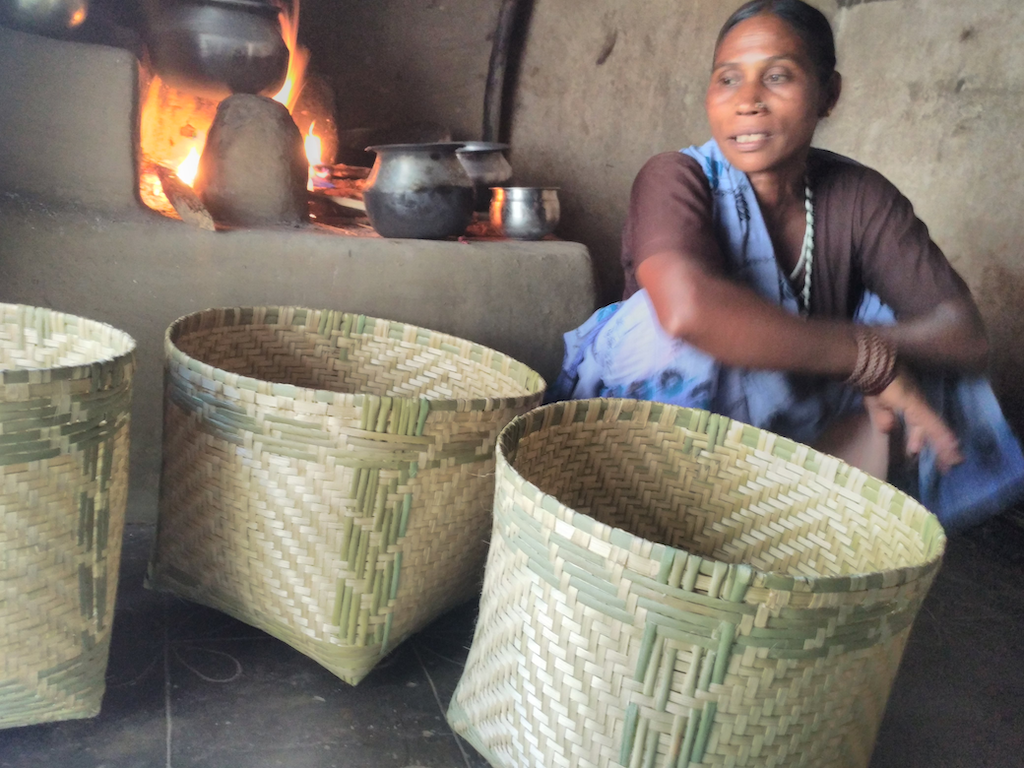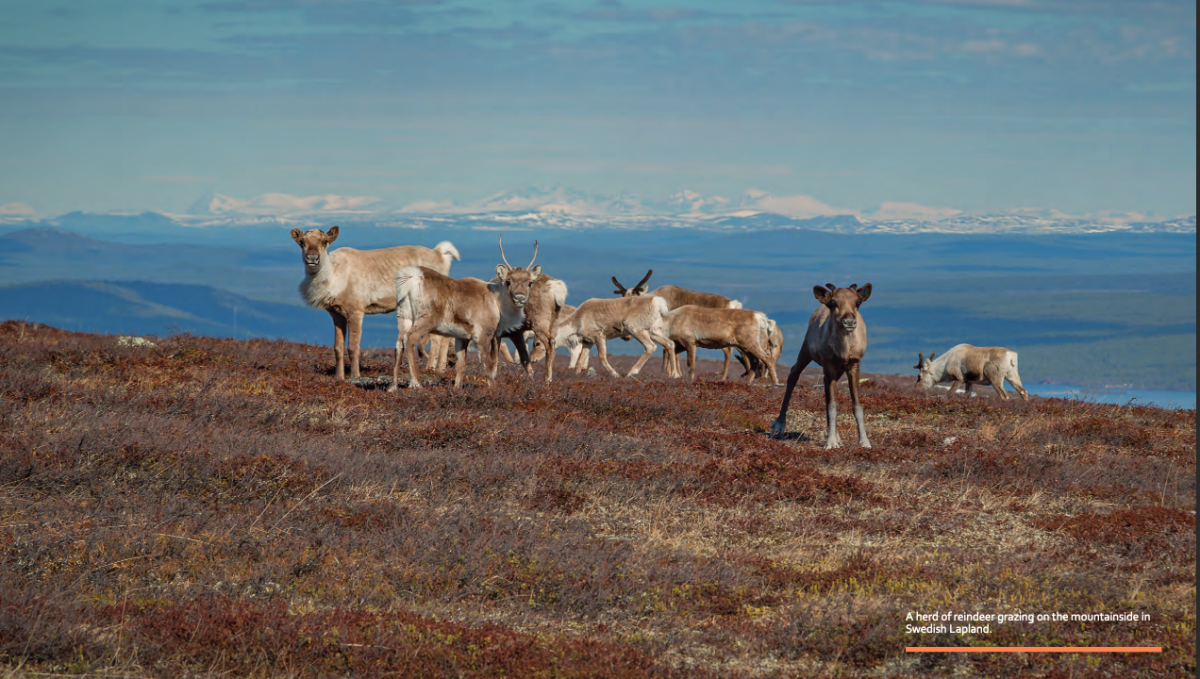IUCN report identifies sites with World Heritage potential in Himalaya and beyond
Gland, Switzerland, 16 December 2021 (IUCN) – A new report lists seven broad areas in the Himalayas, the Hindu Kush and the Karakoram mountain ranges where new natural World Heritage sites could be found. It also identifies possible extensions of existing World Heritage sites, as for instance the area north of Mount Everest, situated in China, which could complete the already-listed Sagarmatha National Park in Nepal, to the south.

Khangchendzonga National Park in India was inscribed on the World Heritage List in 2016
Photo: IUCN / Tilman Jaeger
The report, Leveraging the World Heritage Convention for conservation in the Hindu Kush Himalaya, was produced by the International Union for Conservation of Nature (IUCN), Wild Heritage and the International Centre for Integrated Mountain Development (ICIMOD), and supported by the National Geographic Society.
Many of the areas identified as having World Heritage potential cross borders or complement adjacent World Heritage-listed sites in neighbouring countries. For instance, the world’s highest peak – known as Everest, Sagarmatha, Chomolungma or Zhumulangma, among other names – was inscribed on the UNESCO World Heritage List in 1979, but only on its Nepalese side. For the entire mountain to gain this status and benefit from intergovernmental protection, a process for inscribing the area on China’s side could be envisaged, according to the new report.
“Current World Heritage sites represent only a part of the natural and cultural wealth of the Hindu Kush Himalaya, which by nature transcends frontiers in some cases,” says Pema Gyamtsho, Director General of ICIMOD. “The report is an important milestone towards recognising the region’s global significance under the World Heritage Convention, which fosters international cooperation.”
“IUCN Asia accords high priority to the conservation and sustainable development of the Hindu Kush Himalaya. This unique and remarkable region, shared by eight Asian countries, is globally famous for its mountains and its iconic wildlife such as the snow leopard, but it also plays a vital role in ensuring water supplies for hundreds of millions of people. The Brahmaputra, Ganges, Indus, Irrawaddy, Mekong, Yangtze and Yellow rivers all originate from this region,” says Dindo Campilan, IUCN’s Regional Director for Asia.
The Hindu Kush Himalaya, as defined by ICIMOD, spans across Afghanistan, Bangladesh, Bhutan, China, India, Myanmar, Nepal and Pakistan. Covering some 3.5 million square kilometres in total, it includes all of the world’s 14 peaks above 8000 metres of altitude. Far from a land of rocks and snow, the region is mainly covered by grassland, forest and shrubs, which host a rich diversity of species, many of which are found nowhere else on Earth. Four biodiversity hotspots converge there: the Himalaya, the Mountains of Central Asia, the Mountains of Southwest China and the Indo-Burma Biodiversity Hotspot.
Today, 17 World Heritage sites are listed in the region, including 10 for their natural values. The report considers seven broad areas for possible new inscriptions on the World Heritage List.
This includes a massive complex of six contiguous protected areas in Afghanistan, China, Pakistan as well as Tajikistan neighbouring the Himalaya Hindu Kush. The complex would measure over 33,000 sq km across three different mountain ranges – the Hindu Kush, the Karakoram and the Pamir. Part of the ancient Silk Road, this vast landscape hosts a fragile alpine ecosystem combining arid and semi-arid land, and cold winter deserts.
Other broad areas where World Heritage sites could be envisaged include the Meghalaya subtropical forests ecoregion in north-eastern India, both the eastern and western Himalayan broadleaf and conifer forests, the eastern Himalayan alpine shrub and meadows, and parts of the “northern triangle” forests of northern Myanmar.
Further possible new sites identified in the report are the Shey Phoksundo National Park and Upper Dolpo in Nepal; Sanjiangyuan and the Yaluzangbudaxiagu Nature Reserve in China; Central Karakoram and Hunza Valley in Pakistan; and Band-E-Amir in Afghanistan.
The report also highlights the importance of rivers originating in the Hindu Kush Himalaya, a region which hosts the largest permanent ice cover in the world outside the polar region. These rivers serve as natural corridors for species and provide freshwater to millions of people living downstream. One possible new river-specific site could be the Ayeyawady River Corridor in Myanmar.
Opportunities also exist for extending already-listed World Heritage sites to adjacent areas that belong together ecologically, according to the report. In addition to the north side of Mount Everest, the Royal Manas National Park in Bhutan was identified as a possible extension to the existing World Heritage site of Manas Wildlife Sanctuary in India, which was inscribed in 1985. Similarly, Nepal’s Chitwan National Park, inscribed in 1984, could extend to other protected areas situated nearby in the so-called Terai lowlands of India and Nepal. Such extensions would increase the integrity of these World Heritage sites, and foster greater protection of iconic species, including tigers, rhinos and elephants.
Other existing sites discussed for extensions in the report include Khangchendzonga National Park in India, the Three Parallel Rivers of Yunnan Protected Areas in China, as well as various listed areas in China’s Sichuan Province, including the Giant Panda Sanctuaries.
Natural World Heritage sites are globally recognised for their unique natural values, such as the scale of natural habitats, intactness of ecological processes, viability of populations of rare species, as well as exceptional natural beauty. Only a few sites gain this status following a long and rigorous process that does not guarantee inscription.
The report, Leveraging the World Heritage Convention for conservation in the Hindu Kush Himalaya, follows consultation with global and regional experts, states parties and stakeholders at a workshop convened by ICIMOD in Kathmandu.
For more information or to set up interviews, please contact:
IUCN Press office
Tel: +41 79 536 0117, press@iucn.org
ICIMOD Media Unit
Tel: +977 1-5275222, ext 115, media@icimod.org



